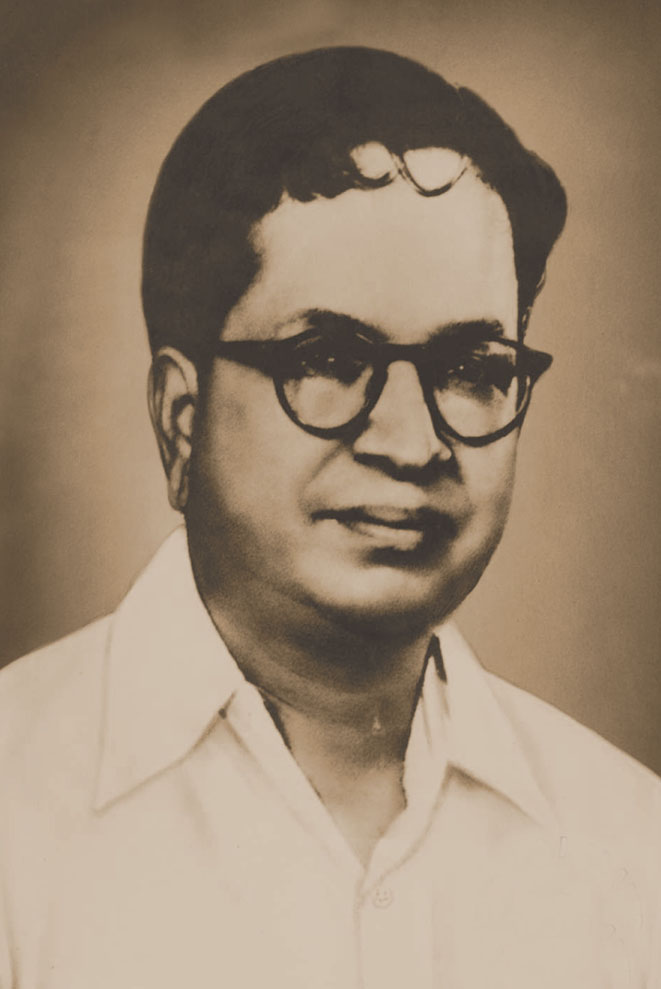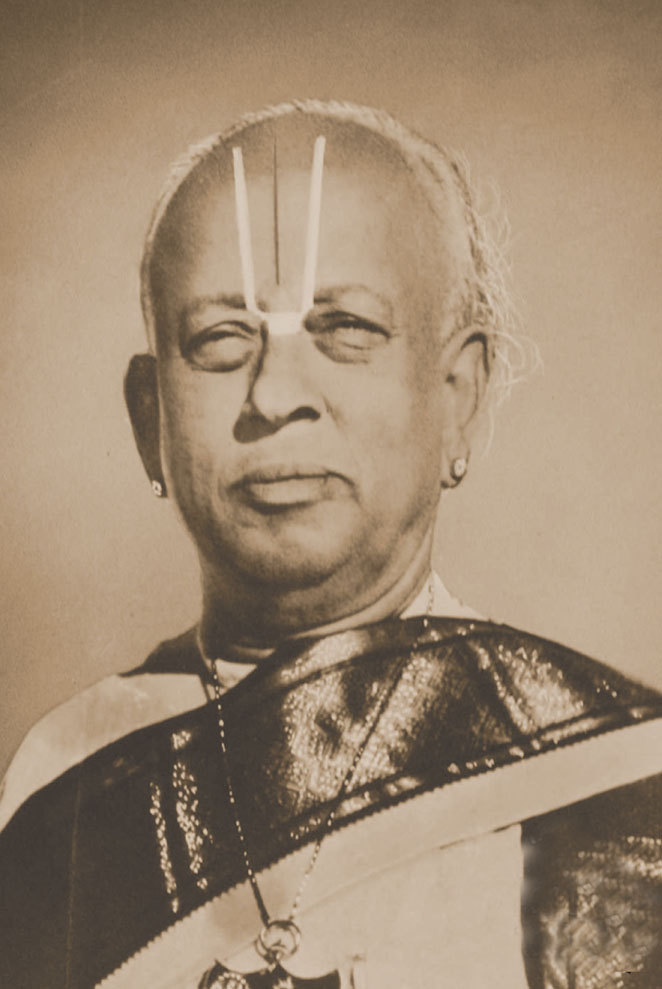Registered with the Registrar of Newspapers for India under R.N.I 53640/91
Vol. XXIX No. 17, December 16-31, 2019
Lost Landmarks of Chennai
– SRIRAM V
Where buses stopped for music
Devanathan Street is a short thoroughfare that connects Venkatakrishna Iyer and St. Mary’s Roads. Right in the middle of it is a bus stop. I am told that for years the bus conductors would announce it as Ariyakkudi and not by the street’s official name. During the 1980s I must have travelled numerous times by bus on that route, but I have never heard it being referred to as Ariyakkudi. It must have been a practice between the 1950s and 1970s. For those who are not into Carnatic music, Ariyakkudi stands for Ariyakkudi T. Ramanuja Iyengar (1890-1967), who, between 1920 and 1963, reigned as the numero uno of the art form. He is often credited with creating the present concert format though he never claimed to be the originator himself.


Left: Madurai Mani Iyer and above: Ariyakkudi Ramanuja Iyengar.
Ramanuja Iyengar had his origins as the village name suggests, in the Chettinad region. Though he was a popular performer in Madras city even by the 1920s, he made it his place of residence quite late in life. After having lived in Ariyakkudi and Karaikkudi till the 1930s, he moved to Kumbhakonam, which became his place of residence for quite a while. There he built several one-room tenements which came to be known as Ariyakkudi Stores and these he rented out. A man of a witty and non-confrontational temperament, Ramanuja Iyengar had numerous friends and patrons such as the Zamindar of Devakottai in Madras and they opened their homes to him to stay in each time he came to the city. This was despite his well-known and not so endearing habit of asking for anything that took his fancy at the homes of his hosts and getting them to gift the coveted item. These varied from wooden planks that formed the base of swings to large cupboards, diamond rings and chains, and even something as small as a rosary. Besides, he had numerous friends in the artiste fraternity and among these he enjoyed the very warm and sisterly affections of two famed singers of Madras – C. Saraswathi Bai and Madras Lalithangi. He would often stay with them too.
It was only in the late 1940s that Ramanuja Iyengar decided to shift to Madras. Among his admirers was Kasturi Srinivasan of The Hindu and through the latter’s good offices, a house on Mylapore’s Nadu Street was found. Ramanuja Iyengar moved in with his disciples among whom was K.S. Dhanammal, his companion and confidante, the wedded wife Ponnammal continuing to reside in Chettinad. This proved problematic for the owners of the house. They were orthodox Vaishnavites who felt that the property, which had once been hallowed by the visit of their pontiffs, the Jeers, was now sullied forever. It was time for Ramanuja Iyengar to move and when he did so, he shifted to a newly built house in the then new area of Mandaveli, at the intersection of Devanathan Street and Sambandan Colony. That is when he lent his name to the bus stop.
The house on Devanathan Street was a creative hub, for this was where Ramanuja Iyengar taught several students and fought his battles with Sabhas who were not too keen to provide performing opportunities to Dhanam, who was an indifferent disciple. He also most famously ‘boycotted’ the Music Academy for the importance it gave M.S. Subbulakshmi. It is also quite likely that this was where he completed the tuning of the Thiruppavai, the premiere of the tuned set of 30 verses happening at the Sri Parthasarathy Swami Sabha, Triplicane. It was from this house that Ariyakkudi must have set off to Delhi to receive the President’s Award in 1952; he was the first Carnatic artiste to be so honoured. It was also from here that he drove to Rajaji Hall in 1963 to be felicitated for completing 50 years in the service of music. That was a grand event, with His Highness Jayachamaraja Wodeyar of Mysore presiding. Given that he had boycotted the All India Radio because it gave her the same fee as him, Ariyakkudi’s reaction at being gifted a navaratna chain and ring by M.S. Subbulakshmi and T. Sadasivam on this occasion is not recorded but he gracefully accepted both items.
With so much happening at this one house on what was a quiet street, it is no wonder that bus conductors decided to call the stop Ariyakkudi. But his days were numbered. Shortly after the grand event at Rajaji Hall, Ramanuja Iyengar began complaining of pain in his knees and this worsened over time, preventing him from sitting on the floor to perform. By 1966 he had taken to sitting on a bench at concerts and the AIR Trichy recorded his rendition of the Thiruppavai that way. Unknown to him and the doctors, he was suffering from cancer and by the time it was detected, it was too late. He died in January 1967, just 40 days after his beloved Dhanam passed away following a brief illness. It was said that his broken heart had killed him. Ramanuja Iyengar’s funeral from the house on Devanathan Street was a grand spectacle with mourners arriving in large numbers. The residence was later sold and today not a trace of it survives. Ariyakkudi however remains a hallowed name in Carnatic memory.
Not far from here is Luz Church Road and the bus stop there was referred to as Madurai Mani after the eponymous musician who lived there for quite a while. Unlike Ramanuja Iyengar who moved to Madras long after he became famous, Madurai Mani Iyer (1912-1968) had made the shift while still young. His debut in the city was as Master Subramaniam, Madura, in 1927 when he sang songs as part of his father’s lecture at the All India Music Conference that gave birth to the Music Academy. He shifted base in 1929 to the city, living in Nattu Subbaraya Mudali Street, Mylapore. The evacuation of Madras in 1942 saw him moving to Dubash Agraharam, Mayuram, where he stayed till the early 1950s. He then moved back to Madras and lived on Luz Church Road where, as mentioned earlier, the bus stop took his name. In 1958, he moved to a house he built in Karpagambal Nagar and that today is the residence of his artiste nephew T.V. Sankaranarayanan. Luz Church Road bus stop went back to its routine name thereafter.
Mani Iyer’s music was one that transcended all classes. It was said that rickshaw pullers would wave off patrons looking for a ride and prefer to hang around whichever sabha he was singing at so that they could savour his music. It is therefore quite likely that a bus conductor was a fan as well and came up with the name at an inspired moment. Mani Iyer’s music was the result of great talent coupled with determination to overcome all kinds of health issues. It is a matter of record that his fan base has only increased in the decades after his passing.
Carnatic musicians are niche artistes. While some have had statues in their honour and streets named after them, it is perhaps only Ariyakkudi T. Ramanuja Iyengar and Madurai Mani Iyer who had bus stops informally commemorating them.

